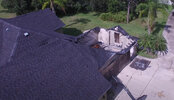android04
Active Member
Both the car and the mobile charge connector/wall connector monitor temperatures at multiple points. There are temp sensors in the charge port, in the body of the mobile charge connector/wall connector, and in the electrical outlet adapter of the mobile charge connector (this one monitors the temperature at the plug end). The car and charge connectors will respond to elevated temperatures by reducing current draw or stopping charging. That leaves issues with wiring and connections between the back of the outlet and the breaker panel.I truly appreciate the civil discourse on this thread. Some great thoughts and insights for sure.
That said, I really would like us to not trivialize these concerns especially because the way a battery fire burns, it has the potential to take a lot down with it very fast. Cars burned per miles traveled is all good and dandy but an ICE car would not sit attached to a 240V outlet overnight and hence the potential for this happening in that scenario would be nil or very very low. A lot of us park our Teslas in our garages and mine is underneath our master bedroom so my main concern was if there is something that we should be watching out for. It was interesting and caught my eye because in the past it's usually been the model S that was involved in such incidents. And I think I had read it was mainly in the older models and fixed in later ones. Was surprised to see that this was a Model 3.
It also looks like proper/professional installation and use of recommended wiring is key. The sometimes relatively prohibitive cost to do so might cause a few folks to youtube it and who knows if that was the culprit? And as someone mentioned, using a wall mounted charger hardwired vs the mobile one seems to be a better option? I personally did not go that route because I planned to always charge overnight at home and have not unplugged my mobile charger since the day I got it.
Brings me to my point: wondering if the car has a way to monitor heat at charge point and to cut off/stop charging if it senses anything awry?
Have an electrician check all the electrical stuff to make sure it's fine. You can also install a smoke detector that is networked with your home smoke detectors so they all go off in case of smoke or fire, but I believe a smoke detector isn't recommended if you put ICE cars in the garage. The smoke from the exhaust might damage them. Other than that, I'd say you might be a little paranoid in trying to prepare for a very rare situation.



